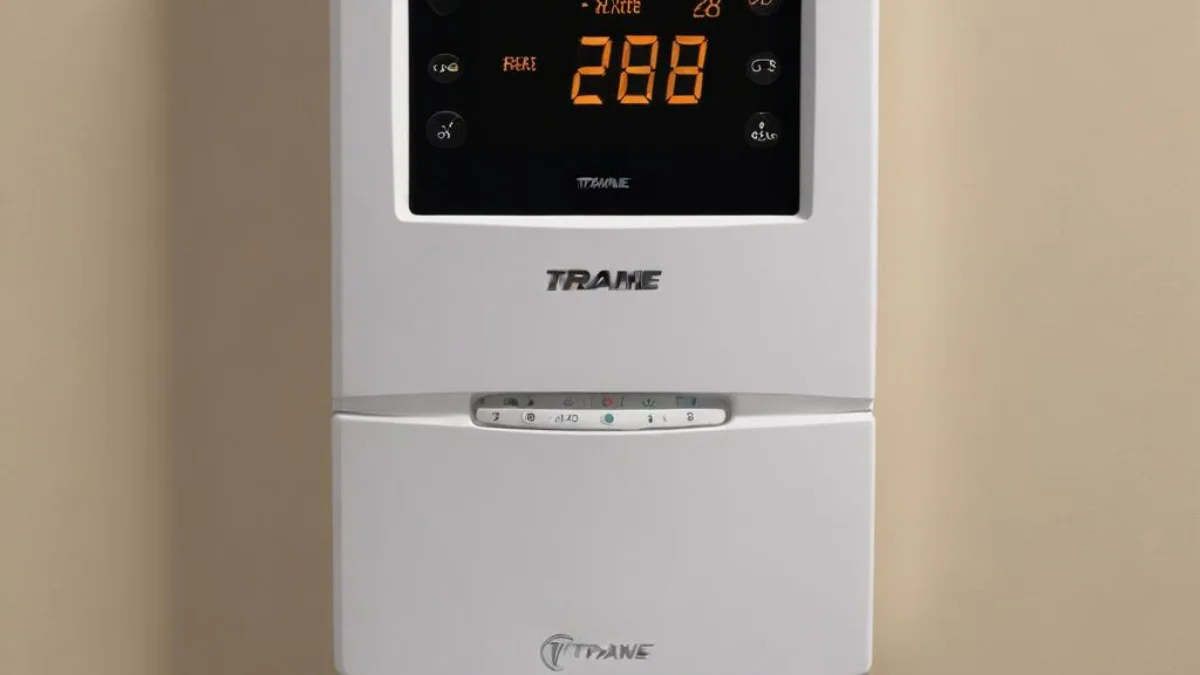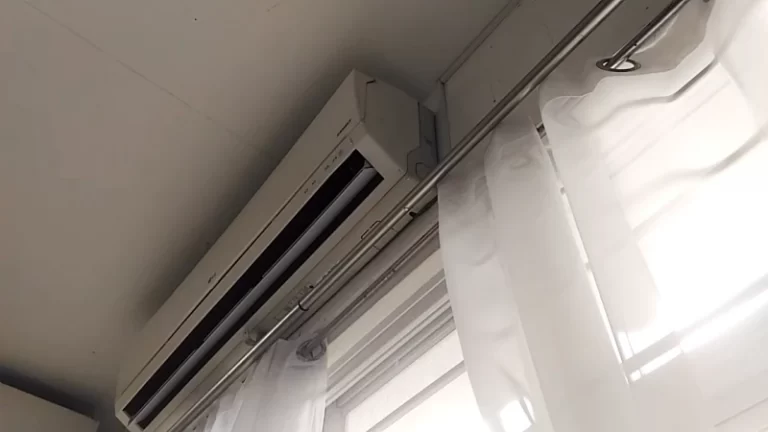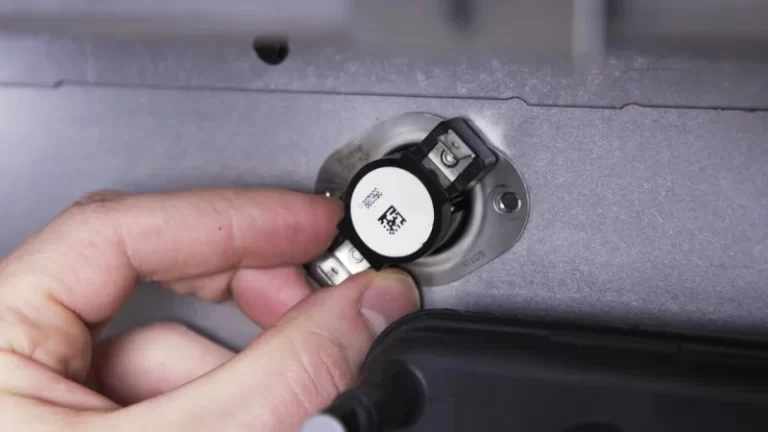Trane AC Has No Power to the Thermostat? Your Ultimate Troubleshooting Guide
That moment of panic is all too familiar for homeowners. You walk over to adjust the temperature, and you’re met with a lifeless, blank screen on your Trane thermostat. Your first thought might be a costly repair bill, but don’t despair just yet. Often, a Trane AC with no power to the thermostat is a problem you can solve yourself with a bit of systematic troubleshooting.
This comprehensive guide will walk you through the most common causes and provide step-by-step solutions to restore power to your thermostat and bring comfort back to your home. We’ll cover everything from simple oversights to more complex electrical issues, empowering you to diagnose and fix the problem like a pro.
You'll Learn About
First Things First: Why Is My Trane Thermostat Blank?
A blank thermostat screen is the primary symptom of a power issue between your Trane HVAC system and its control unit. The thermostat is the brain of your heating and cooling system; without power, it cannot communicate with the indoor air handler or the outdoor condenser unit. This means no cool air in the summer and no heat in the winter.
Understanding the root cause is the key to a successful fix. The problem could be as simple as a tripped breaker or a clogged filter, or it could point to a more intricate issue within the system’s low-voltage wiring. Let’s explore the potential culprits one by one.
The Usual Suspects: Easy Fixes to Try First
Before diving into more complex diagnostics, always start with the simplest potential problems. These common issues are often the reason for a Trane thermostat losing power and are thankfully the easiest to resolve. You might be surprised at how often a quick check can save you a service call.
Tripped Circuit Breaker: Your HVAC system is a powerful appliance that runs on dedicated circuits. A power surge, an overworked system, or an electrical fault can cause the corresponding breaker to trip. This is a safety feature designed to prevent damage to your equipment. Head to your home’s main electrical panel and look for any breakers in the “OFF” or a middle position. Firmly switch the breaker back to the “ON” position. If it trips again immediately, you may have a more serious electrical issue that requires professional attention.
Blown Fuse: Some older Trane systems or air handlers have a separate fuse for the control board, typically a 3-amp or 5-amp blade-style fuse. If this fuse blows, it will cut power to the thermostat. You’ll need to locate the air handler (often in the attic, basement, or a closet), remove the service panel, and inspect the control board for the fuse. If the small wire inside the fuse is broken, it needs to be replaced with a new one of the exact same amperage.
Improperly Seated Thermostat: If your Trane thermostat is a newer, removable model, it might simply not be seated correctly on its wall-mounted sub-base. Gently pull the thermostat display off the wall, wait a few moments, and then carefully press it back into place. Listen for a “click” to ensure all the pins are making a solid connection. This simple action can sometimes re-establish the power connection and bring your thermostat back to life.
Digging Deeper: Intermediate Troubleshooting Steps
If the easy fixes didn’t solve the problem, it’s time to roll up your sleeves and investigate a little further. These next steps involve inspecting key components of your Trane HVAC system that are directly responsible for delivering power to the thermostat. Always remember to turn off the power to your HVAC unit at the circuit breaker before opening any service panels.
Check the Air Handler and Condensate System
Your Trane system has several safety switches designed to shut the unit down to prevent damage. One of the most common culprits is the condensate drain line overflow switch. This switch is a protective measure that cuts power to the system if it detects a clog in the drain line, which could otherwise lead to significant water damage.
Clogged Condensate Drain Line: Over time, algae, mold, and debris can build up in the AC drain line, causing a blockage. When the water backs up in the drain pan, it triggers a float switch that shuts down the system, cutting power to the thermostat as a result. Inspect your drain pan for standing water. If you find water, you’ll need to clear the clog. A wet/dry vacuum can be used to suction the blockage out from the exterior drain termination point. Regularly pouring a mixture of vinegar and water down the line can help prevent future clogs. A similar issue with water backup can be seen if you have an AC drain pipe facing up, which can impede proper drainage and trigger the overflow switch.

Safety Switch Issues: Besides the condensate float switch, there might be other safety switches, such as a high-pressure switch or a low-pressure switch, that could trip and cut power. While diagnosing these often requires professional tools, you can visually inspect the wiring to these switches to ensure there are no loose connections.
Examine the Low-Voltage Wiring
The thermostat communicates with your Trane system via a set of low-voltage wires, typically powered by a transformer that converts your home’s 120-volt AC power to 24-volt AC power for the control circuits. A problem with this transformer or the wiring can lead to a dead thermostat.
The “R” Wire is Key: The red wire, or “R” wire, is the primary power source for your thermostat. A loose or disconnected “R” wire at the thermostat, the air handler control board, or a splice in between will result in no power. With the power off, you can gently tug on the “R” wire at both the thermostat’s backplate and the control board in the air handler to ensure it’s secure. Also, inspect for any signs of corrosion or damage to the wires.
Failed Transformer: The transformer is a small, cube-shaped component usually located inside the air handler. Its job is to step down the voltage. If the transformer fails, the entire low-voltage circuit, including the thermostat, will lose power. Testing a transformer requires a multimeter to check for the correct voltage output (around 24V AC). If you’re not comfortable using a multimeter, this is a job best left to a qualified HVAC technician.
Advanced Diagnostics: When to Call a Professional
While many power issues can be resolved with DIY troubleshooting, some problems are more complex and require the expertise and specialized tools of a professional HVAC technician. Attempting to fix these issues without the proper knowledge can lead to further damage to your Trane system or pose a safety risk.
Potential Control Board Failure
The control board (or circuit board) is the central hub of your HVAC system, coordinating all its functions. If the board itself is faulty or has a burnt-out component, it can fail to send power to the thermostat. A visual inspection might reveal burn marks or damaged areas on the board. Replacing a control board is an intricate task that should be handled by a certified technician.
Here is a summary of the most common troubleshooting steps you can take before calling for professional help:
| Troubleshooting Step | Description | DIY or Pro? |
|---|---|---|
| Check Circuit Breaker | Locate your home’s electrical panel and ensure the breaker for the HVAC system is in the “ON” position. | DIY |
| Inspect Condensate Drain & Pan | Check for standing water in the drain pan beneath the indoor unit. A clog can trip a safety switch, cutting power. | DIY |
| Check Air Filter | A severely clogged air filter can cause the system to overheat and trip a high-limit switch, resulting in a shutdown. | DIY |
| Inspect Low-Voltage Fuse | Check the 3A or 5A fuse on the air handler’s control board. If blown, replace it with a fuse of the same amperage. | DIY |
| Check Low-Voltage Wiring | Visually inspect the thermostat wires (especially the ‘R’ wire) for loose connections or damage at the thermostat and the control board. | DIY (Visual), Pro (Testing) |
| Test Transformer | Requires a multimeter to check for ~24V AC output. A faulty transformer will need to be replaced. | Pro |
| Diagnose Control Board | A failed control board can prevent power from reaching the thermostat. This requires professional diagnosis and replacement. | Pro |
Preventative Maintenance is Your Best Defense
The best way to avoid a dead thermostat is through regular, preventative maintenance. A well-maintained Trane system is less likely to experience the issues that cause power failures. Simple tasks can make a huge difference in the longevity and reliability of your HVAC system.
Change Your Air Filter Regularly: This is the single most important maintenance task a homeowner can perform. A clogged filter restricts airflow, forcing the system to work harder, which can lead to overheating and tripped safety switches. Check your filter monthly and replace it as needed, typically every 1-3 months.
Keep the Condensate Drain Line Clear: As mentioned earlier, a clogged drain line is a very common cause of system shutdowns. Once or twice a year, pour a cup of distilled vinegar down the condensate line access port to kill algae and prevent blockages. This simple step can prevent water damage and unexpected system failures. Problems with drainage aren’t just limited to your AC; a washing machine drain pipe leaking in wall can cause similar widespread damage, highlighting the importance of proper drainage throughout the home.
Schedule Annual Professional Tune-Ups: Have a certified HVAC technician inspect your Trane system annually. They will clean the coils, check electrical connections, test safety controls, and ensure the system is operating at peak efficiency. This can catch potential problems before they lead to a complete shutdown, saving you money and stress in the long run. Similarly, professional inspections of other home systems, like using a chimney water diverter to prevent leaks, are crucial for home maintenance.
Your Action Plan for a Trane AC with No Power to the Thermostat
Facing a blank thermostat can be frustrating, but you are now equipped with the knowledge to tackle the problem head-on. By following a logical sequence of troubleshooting steps, from the simplest checks to more involved inspections, you can often identify and resolve the issue yourself.
Remember to always prioritize safety by turning off the power before inspecting internal components. If you ever feel unsure or uncomfortable with a step, or if your troubleshooting points to a failed transformer or control board, do not hesitate to contact a qualified Trane service professional. With these tips, you’ll be able to restore power to your thermostat and enjoy a comfortable home once again.


